Analog synthesizers might be the next thing to get into on your musical journey if you are looking to diversify the types of sound you produce, all while sticking to a keyboard-like design. The devices use analog electrical circuits and manipulate voltages to produce the sounds.
We have considered 25 products to bring you the best analog synths in the market. As such, we have picked the Korg Prologue 61-Key Analog Synthesizer as our first choice, while eight more high-quality options are lined below it. This is because the device holds a superior number of keys as well as voices to the other picks. Also, the arpeggiators and programs are something to write home about making this the complete package.
Reviewing the 25 products took quite a bit of time and was an exercise that involved checking for information on said products from the manufacturer’s websites. This was then counterchecked with customer reviews for any inconsistencies. The metrics for ranking devices included keyboards and voices, as these dictate the versatility and sounds that come out of the invention. Connectivity also mattered since you can see what devices to pair your machine with. Other areas of concern are dimensions and power consumption. Our team has thus put the nine total products shortlisted in a table below. You may as well appreciate the in-depth reviews of the best analog synths that come in the middle section of this write-up. The last part is a buying guide to help you with your decisions.
-
Editor’s Choice: Korg Prologue 61-Key Analog Synthesizer“An analog synthesizer featuring 61 full-size keys with velocity, 16-voice polyphony, dual effect section, 500 programs and six types of arpeggiators.”
-
Premium Pick: Dave Smith Instruments OB-6 Analog Synthesizer“An analog synthesizer featuring 49 semi-weighted keys with velocity and aftertouch, 6-voice polyphony, two oscillators per voice and 500 user programs.”
-
Best Monophonic Analog Synth: Arturia MatrixBrute Analog Monophonic Synthesizer“An analog monophonic synthesizer featuring 49 full-size keys with velocity and aftertouch, 256 preset memory locations, three oscillators per voice and a 64-step sequencer.”
-
Best Mini Analog Synth: Novation MiniNova Analog Modeling Synthesizer“A USB-powered analog modelling synthesizer featuring 37 mini-keys with velocity, 18-voice polyphony, a fully editable Nova-class engine, and Vocoder with unique VocalTune.”
-
“An analog monophonic synthesizer featuring 25 velocity-sensitive mini-keys, 3-waveform oscillators, Steiner-Parker filter, a standard ADSR envelope and 64-step sequencer.”
-
Best Polyphonic Mini Analogue Synth: Korg Minilogue 4-Voice Polyphonic Analog Synth“An analog synthesizer featuring 37 velocity-sensitive slim keys, 4-voice polyphony, 200 programs, automatable 16-step polyphonic note and motion sequencer.”
-
Best Synthesizer With Unique Effects: Elektron Analog Keys 4-Voice Synthesizer“An analog synthesizer featuring 37 velocity-sensitive keys with aftertouch, 4-voice polyphony, two oscillators, two sub-oscillators and unique effects.”
-
Best Analog Synth With Built-in Speaker: Yamaha REFACE CS Portable Analog Modeling Synthesizer“An analog modelling synthesizer featuring 37 mini-keys, 8-note polyphony, a built-in speaker system, and five types of onboard effects.”
-
Best Beginner Analog Synth: Novation Bass Station II Analog Mono-Synth“An analog monophonic synthesizer featuring 25 keys with synth-action and aftertouch, 64 factory preset, pattern-based step sequencer, two oscillators, sub-oscillator and a separate filter overdrive.”
Top 9 Analog Synths Review 2025
Korg Prologue 61-Key Analog Synthesizer – Editor’s Choice
- Power consumption: 38W
- Keyboard: 61 keys, velocity
- Voices: 16
- Connectivity: headphone jack, sync in/out, MIDI in/out, USB B, Expression, Damper
- Dimensions: 34.41 x 13.70 x 4.65 in.
Other features: 4 voice modes, dual effect section, six types of arpeggiators, 500 programs, eight program sorts, filter with drive and low-frequency compensation, three oscillators per voice
Of course, the first thing to note about this product is the full-size keyboard, and as you will note from the options below, not many options get to offer 61 keys. It is important to note that the tool is a polyphonic synthesizer and that allows the users to play a couple of keys together without altering their original sound. As such, this tool is more versatile in sound production than monophonic counterparts. However, if you need a mono sound, you can switch to it by selecting the mono voice mode. There are an additional two voice modes to the poly and mono synth options.
Another impressive aspect of the tool is the arpeggiator selection. For anyone looking to play through a series of notes, this polyphonic analog synth will not be the one to hold you back. The device also comes with an impressive array of programs that you can choose to help you play through a set. They total 500 in number, and with such a variety, it may present a problem in looking for or even finding the right one for a particular scenario. Nevertheless, the manufacturer saw this as a potential problem and set about to solve it. This is why you find the eight program sort methods included. You can sort by category, number, alphabetical order, and more.
You should as well take a look at the body of the device. Aluminum and Oakwood are some of the more prominent components that make up the device and emphasize the manufacturer’s attention to detail as well as their mission to make the tool more durable. As a user, you may as well want to expand the possibilities for your synth. The device has additional oscillator and effect slots and allows you to develop and load them onto the machine using the included librarian software.
Another thing to pay attention to is the fact that the device is bi-timbral. As such, if you want to play two different programs at the same time, this is the tool for you.
What are our favorite features?
- Full-size keyboard
- Keys are velocity-sensitive
- Up to 16 voices
- 500 programs come with the purchase
- Easy to sort through the programs
What could be better?
- Device costs close to $1500 and as such is expensive
Dave Smith Instruments OB-6 Analog Synthesizer – Premium Pick
- Power consumption: 30W
- Keyboard: 49, semi-weighted with velocity and channel aftertouch
- Voices: 6
- Connectivity: 2 audio outputs, headphone, MIDI in/out/thru, USB, filter cutoff expression pedal, volume expression pedal, sustain footswitch, sequencer start/stop footswitch
- Dimensions: 37.5 x 18.2 x 8.2 in.
Other features: four-octave keyboard, 64-step sequencer, two oscillators per voice, dual effects; a state-variable filter, and voltage-controlled amplifiers; 500 user and 500 factory programs; X-mod with two sources and five destinations
Second, on our list is the Dave Smith Instruments OB-6 Analog Synthesizer, which also happens to be our premium pick. You may have to give up a few keys if you purchase this tool over the editor’s choice, but there are also plenty of positives that the synth has to offer. Among the highlights of this device is the four-octave keyboard. As well, you find that the keys in the setup are semi-weighted. This is probably why they are sensitive to touch velocity and after-touch.
Another area to look into is the voice selection by this piece of equipment. With the purchase, you get six total voices with the added advantage of two voltage-controlled oscillators per voice. Using the inbuilt sequencer, you will not only play and edit but also be able to record the music you create with the synth.
Program selection may also be an area of interest and one in which the tool impresses. You get a total of 500 pre-loaded programs, and this will provide plenty of practice as you start to use the device. After that, when you start to get a little more creative with the 500 extra program slots that you can fill with your creations.
You may as well want to use this tool alongside some pedals that you already own or are planning to buy. As such, the pedal inputs are likely to come in handy.
Why is it special?
- High-quality keys
- Sequencer is impressive as well
- Multiple input and output connection ports
- 500 preloaded programs as well as the space for 500 user-made programs
What are the flaws?
- Device costs almost twice as much as the editor’s choice and hence is out of reach for most people
Arturia MatrixBrute Analog Monophonic Synthesizer – Best Monophonic Analog Synth
- Power consumption: 45W
- Keyboard: 49 keyswith velocity and aftertouch
- Voices: 1
- Connectivity: stereo ¼” jacks, 12 CV inputs and 12 CV outputs, audio input, Gate I/O, sync in/out, Expression and Sustain pedals, USB in/out
- Dimensions: 17 x 34 x 4.5 in.
Other features: 256 preset memory locations, three analog oscillators, Steiner parker filter, ladder filter, audio mod; a 64 step sequencer with separate STEP, ACCENT, SLIDE, and MODULATION steps; MIDI interfacing; 3 envelope generators
The Arturia MatrixBrute Analog Monophonic Synthesizer is another 49 key synth to feature on the list. As to the keyboard, it offers both velocity sensitivity and aftertouch; hence it is similar to the remium pick in this regard. The device also features three oscillators namely the pulse sawtooth and triangle options, and these have great input in shaping the sound that comes out. They do this by generating currents which can then be tweaked to produce the desired sounds.
The noise generator also comes into play while making your music. This component of the device is capable of producing about four different types of noise. They include white, pink, red, and blue noise. Using the mixer, the user can incorporate and blend input from the noise generator, oscillators and even external sources of sound to give just the right output.
Also, there are three major voice modes despite the selection of voices being limited to only one. The mono mode is to be expected while the paraphonic mode is a little less so since modern manufacturers tend to prefer true polyphonic circuitry. Another significant component of the device is the inclusion of performance controls. With these modulation and pitch bend can be adjusted to desired results.
What makes it special?
- 49 high-quality keys
- Three oscillators are included for shaping the sound
- 256 preset memory spaces for your programs
What cons did we find?
- The device is a mono-synth hence not as versatile as a polyphonic synth
Novation MiniNova Analog Modeling Synthesizer – Best Mini Analog Synth
- Power consumption: 9V DC 300mA
- Keyboard: 37, mini-keys with velocity
- Voices: 18
- Connectivity: XLR dynamic mic, ¼” jack input, headphone; sustain pedal, MIDI in/out, 12V power input, USB B 2.0
- Dimensions: 29 x 19 x 6.5 in.
Other features: USB bus-powered, 256 sounds, a fully editable Nova-class synth engine, Vocoder with unique VocalTune, pitch correcting effect, five effects per voice, 14 filter types, six envelope generators, 3 LFOs, and 20 modulation slots
A mini analog synth may be what you are looking for, and the Novation MiniNova Analog Modeling Synthesizer fits that bill. As you would expect of a mini version of the synthesizer, the keys are more limited in number and peak at 37 in total. If you are used to full-sized keys, this may present a problem as the ones on this device are smaller. Nevertheless, you will need to get used to the idea of smaller keys if you are going to end up making the most out of this piece of equipment. One advantageous attribute of the 37 keys is that they are also velocity-sensitive.
The voice selection is impressive, to say the least, and totals 18 options. Also, for every voice, you can switch up and layer up to five other effects. Despite being a mini analog synth, this tool would work even for a professional looking to have a compact device that is easy to carry around.
Presets are also a critical area by which you can judge this device. When you receive it from Amazon, it will have a total of 256 presets to pick from. After some time, you will no doubt find this number constricting since you cannot edit these presets. As such, there is additional space for 128 more presets, which you can create and customize from scratch.
Vocaltune may be another reason you decide to pick this device over other options. This feature lets your voice be tuned to the notes you will be playing on the mini keyboard at that time. The fact that editing software for your PC is also included with this purchase is also another reason to buy this tool.
What stands out?
- Low power consumption
- Velocity-sensitive keys
- Up to 18 voices
- 256 preset locations of which half are blank for you to fill in
- Editing software is included in the purchase
What cons did we manage to find?
- The keys are smaller than those of a full-size keyboard and may need some getting used to
- Some of the controls are slow to respond
Arturia MicroBrute Analog Synthesizer – Creation Edition – Best Value
- Power consumption: n/a
- Keyboard: 25, velocity-sensitive mini-keys
- Voices: 1
- Connectivity: MIDI/USB, Pitch, Filter, sub-harmonics, pulse width, Metalizer, saw animator inputs; Audio In; pitch, envelope, LFO outputs; 1/4” audio and 1/8” headphone output
- Dimensions: 12.8 x 8.7 x 2.36 in.
Other features: Steiner-Parker filter, 3-waveform VCO, overtone generator, Modulation Matrix, a standard ADSR envelope, 64-step sequencer
The Arturia MicroBrute Analog Synthesizer – Creation Edition is one of two devices on the list with 25 keys in total. This small analog synth will no doubt serve various people well. Among them are beginners who would like to get a feel for these devices before venturing to buy more expensive pro models. The tool is also relatively inexpensive and goes for about $300. There are, however, some features of the device that are on par with more expensive models.
Among the key features, you find a sync-able LFO with which you can use to control sounds and effects from your device. The three basic waveforms this feature produces are the square, sine and sawtooth. Speaking of the sawtooth, the device can also enhance this to create a fat version of this waveform. Also, a common feature you find in most devices on this list is the inclusion of pitch and mod wheels.
You may also want to process the music and sounds you have previously made on other music devices. The audio in port allows you to do this. In addition to that, there are several other connectivity ports included in the small analog synth. Concerning the sequencer, most people will find this component to be top-notch. You can as well create and store up to eight different sequences, all with 64 steps each.
What do we love it for?
- Impressive 64-step sequencer
- Ports allow for input from other devices
- Relatively portable and lightweight
- Relatively inexpensive
What were we disappointed with?
- Mini keys
- Very few keys
Korg Minilogue 4-Voice Polyphonic Analog Synth – Best Polyphonic Mini Analogue Synth
- Power consumption: 8W
- Keyboard: 37, slim-key, velocity-sensitive
- Voices: 4
- Connectivity: Headphones, Audio In, Sync In, Sync Out, MIDI In, MIDI Out, USB Type B
- Dimensions: 24.4 x 6 x 16.6 in.
Other features: 200 programs, eight voice modes, 100 sounds, automatable 16-step polyphonic note and motion sequencer, oscilloscope function, 41-panel controls
You will likely be surprised by how little power the Korg Minilogue 4-Voice Polyphonic Analog Synth requires to function, especially in comparison to other options on the list. However, it still requires an AC connection rather than a battery to provide for power needs. As indicated in the name, this is a 4-voice polyphonic device and an impressive one at that despite being a mini version of a synth.
The number of keys for the device totals 37, all of which are slim and velocity-sensitive. As such, more experienced users will be able to get the most out of their time with the tool. Also, this device features a 16-step polyphonic sequencer. While this is not on par with the 64-step sequencer by the Arturia MicroBrute Analog Synthesizer – Creation Edition, it is still an impressive attribute.
Program selection is also impressive for a tool this size. There can be a total of 200 programs available with this device divided into half. The first half is what comes with the purchase while the other 100 slots you have to fill in. This is undoubtedly an exercise that will take a lot of time but one that is likely to pay off in the future.
What makes it special?
- 16-step sequencer
- 100 fillable preset slots
- Relatively cheap to buy
- Four voices
What cons did we find?
- You may experience the oscillators going out of tune every so often
Elektron Analog Keys 4-Voice Synthesizer – Best Synthesizer With Unique Effects
- Power consumption: 25W (max.)
- Keyboard: 37, velocity-sensitive with aftertouch
- Voices: 4
- Connectivity: MIDI In/Out/Thru with DIN Sync Out, two ¼” main out jacks, four audio out, two audio-in, headphone jack, dual CV/Gate outputs, USB 2.0 port
- Dimensions: 16 x 31 x 8 in.
Other features: 2 analog oscillators, two sub-oscillators, 4-pole lowpass ladder filter, and 2-pole multi-mode filter, unique effects (Wideshift Chorus, Saturator Delay, Supervoid Reverb and more)
This device features a high-quality keyboard with 37 onboard keys that have the attributes of being velocity-sensitive and receptive to aftertouch. The series of connection ports make it possible for this machine to be a part of your overall music setup. Also, the two oscillators included, along with the sub oscillators, will no doubt be responsible for some of the sounds the device makes.
As well, the 4-voice polyphony output that the machine is capable of is one of the reasons that you should consider making this purchase. As to the sequencer, you have full control of this component and can create even 64-step sequences if you know how to use the tool correctly. A feature that we have barely touched on with other options on the list is the warranty. For this specific device, you get a three-year warranty to cover any damage to the controls, innards, or the aluminum body.
You also have several effects unique to the device that you can make use of in your sessions. An example of such is the supervoid reverb. Additionally, the piece of equipment can hold up 4096 sounds in total.
What do we love it for?
- Portable body
- Low power needs
- Velocity-sensitive keys with aftertouch
- 3-year warranty
What were we disappointed with?
- Display on the device may not be the best quality
Yamaha REFACE CS Portable Analog Modeling Synthesizer – Best Analog Synth With Built-in Speaker
- Power consumption: 6W
- Keyboard: 37, mini-keys
- Voices: 8
- Connectivity: DC IN jack, foot controller, R/L/MONO jacks, headphones jack, AUX IN jack, MIDI IN/OUT, USB
- Dimensions: 29.5 x 9.4 x 3.9 in.
Other features: built-in speaker system, integrated phrase Looper, five types of onboard effects, OFF (effect bypass,) Delay, VCM Phaser, VCM Chorus/Flanger, Distortion, five oscillators
Yamaha also makes it a point to make it onto our list with the inclusion of this device in their line-up. The outlook of the tool is rather simplistic, especially if you compare it to other machines of the same caliber. You would expect the tool to have both some upsides as well as some disadvantages. Among the advantages is the inclusion of five oscillators. You will thus be able to do more with this than you can with a more limited oscillator collection.
Also, it comes with a built-in speaker. As such, you can plug your DC jack in and start creating and experimenting with different sounds and sequences as soon as you receive the device. In comparison to other polyphonic analog synths, this tool is also impressive since you get up to an eight-note polyphony.
The five different onboard effects may as well serve to sway your buying decision if you are stuck between this option and another one. Also, this is a mini 37-key keyboard, which is something you should be aware of before making the purchase.
Why is it special?
- Built-in speaker
- Low power needs
- 8-note polyphony portable
What are the flaws?
- Small keys which are also limited in number
Novation Bass Station II Analog Mono-Synth – Best Beginner Analog Synth
- Power consumption: 9V DC 300mA
- Keyboard: 25 keys, synth-action, aftertouch
- Voices: 1
- Connectivity: MIDI/USB, mono and headphone output, external input, Sustain pedal input, MIDI IN/MIDI OUT, DC power input
- Dimensions: 18 x 10.75 x 3 in.
Other features: USB powered, 64 factory preset, pattern-based step sequencer, two oscillators, an additional sub-oscillator, filter-modulation effects, and a separate filter overdrive
This is probably one of the best monophonic analog synths in the market. It produces only one voice, but you can find lots of different ways to make music even with that limitation. It may also serve as a beginner analog synth before the user upgrades to polyphony.
On the body of the device, you get 25 keys with the only other device featuring such a limited number being the Arturia MicroBrute Analog Synthesizer – Creation Edition. Nevertheless, these keys are incredibly high-quality and come with aftertouch. The features section above indicates the inclusion of 64 factory presets to make your work easier. What it fails to mention is the inclusion of 64 other preset slots that you can fill in with your creations.
Also, with the wide range of connectivity ports, you will be hard-pressed to find an electronic music device that you cannot connect to the Novation Bass Station II Analog Mono-Synth.
What makes it stand out?
- Low power consumption
- Keys are aftertouch sensitive
- USB powered
- 64 included presets
Which disadvantages must you keep in mind?
- Only comes with 25 keys
- Not for professional use
What is an analog synthesizer?
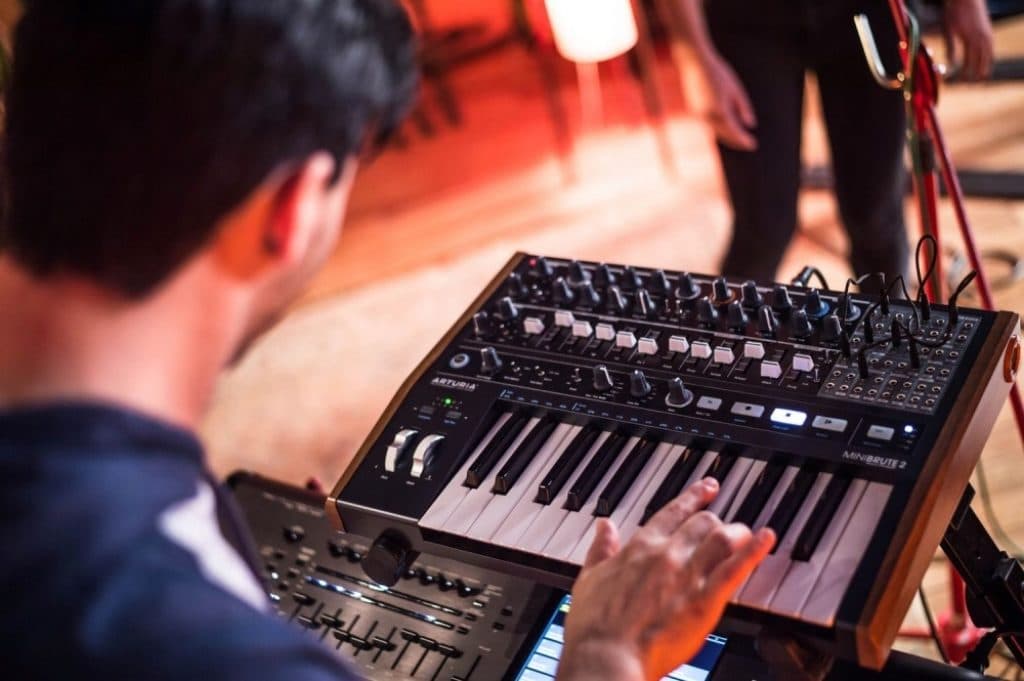
Most analog synthesizers have a keyboard-like design and are similar in the way they generate sounds. The devices require analog circuitry to work. Often when an analog signal is created and passed through the circuitry, a specific sound will be produced. Signals can be manipulated using the keyboard to produce different sounds at a moment’s notice.
Benefits of analog synthesizers
For a music creator, an analog synth is just one of those devices that help you create music from scratch. The options to how you can tweak sequences and sound outputs are endless. These devices can as well be connected to other music devices and incorporate their output into the result. As such, you will find music creators are likely to buy these tools at some point in their lives.
Features to consider when choosing an analog synth
Features are the most objective way to determine whether an analog synth is right for you. As you have seen from the devices mentioned above, each tool has its unique features that serve to differentiate it from the rest. They determine what each machine is capable of and are often instrumental in determining the price of the device as well. The rule of thumb is that the more high-end features a synth has, the higher the price. As such analog synth features are listed and explained below so you can decide for yourself which ones are necessary to your music-making and which ones aren’t.
Polyphony
There are two main types of analog synthesizers, and those are the polyphonic and monophonic options. The monophonic gadget, as the name suggests, is capable of producing only one voice. On the other side, the polyphonic tool will provide multiple voices. Some devices are even capable of producing and playing several voices at the same time.
Keyboard
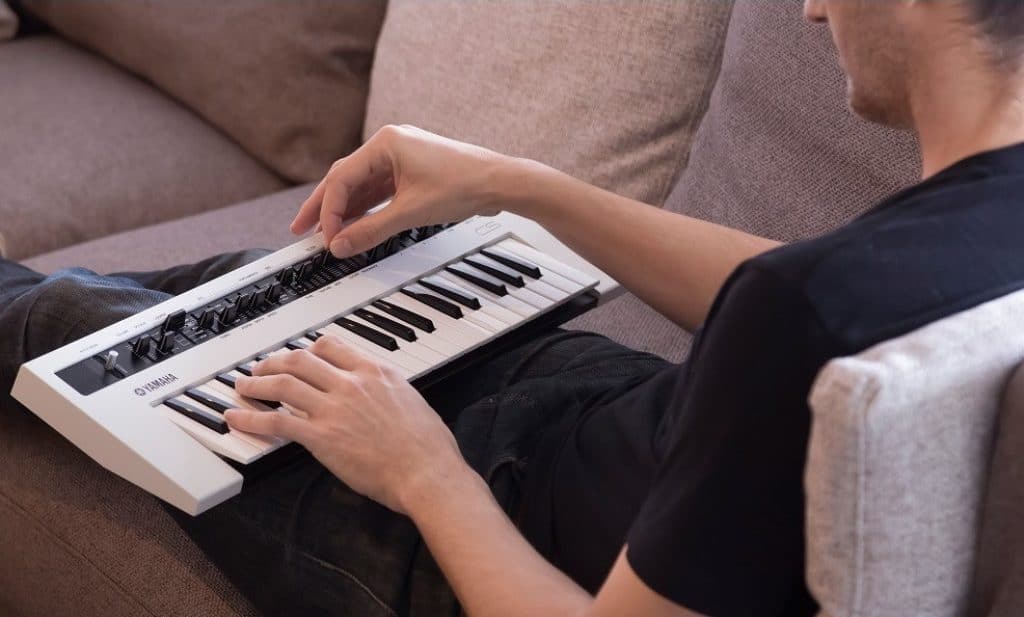
You want a versatile keyboard with your device since it all but guarantees excellent results. Here higher quality keys tend to be more responsive to input. As such, if the keys are velocity-sensitive, they will perform better than those that are not. You can also check for other attributes such as being aftertouch receptive and the design or type of the keys. This is regarding whether they are weighted, semi-weighted, or not weighted at all. The number of keys is also crucial since more keys are more versatile and more comfortable to play.
A sequencer and built-in speaker
Sequencers allow the user to create a series of signals in the form of voltages. Of course, this results in several musical notes played. Because of this, you will be able to play and repeat a series of notes if you use the sequencer. Some sequencers are as well more advanced than others. An example is seen where the Korg Minilogue 4-Voice Polyphonic Analog Synth has a 16 step sequencer while its counterpart, the Dave Smith Instruments OB-6 Analog Synthesizer, is capable of a 64-step sequence.
Programs
Programs are musical presets that you can use as a base for your next creation. Of course, different machines have different types of programs available, and they may also vary in number. Also, most devices you come across will allow you to create your own presets or programs, and that gives you a little more freedom to create and play around with your music. An example of such is shown in the Novation Bass Station II Analog Mono-Synth that has 64 programs and 64 other free slots for you to fill.
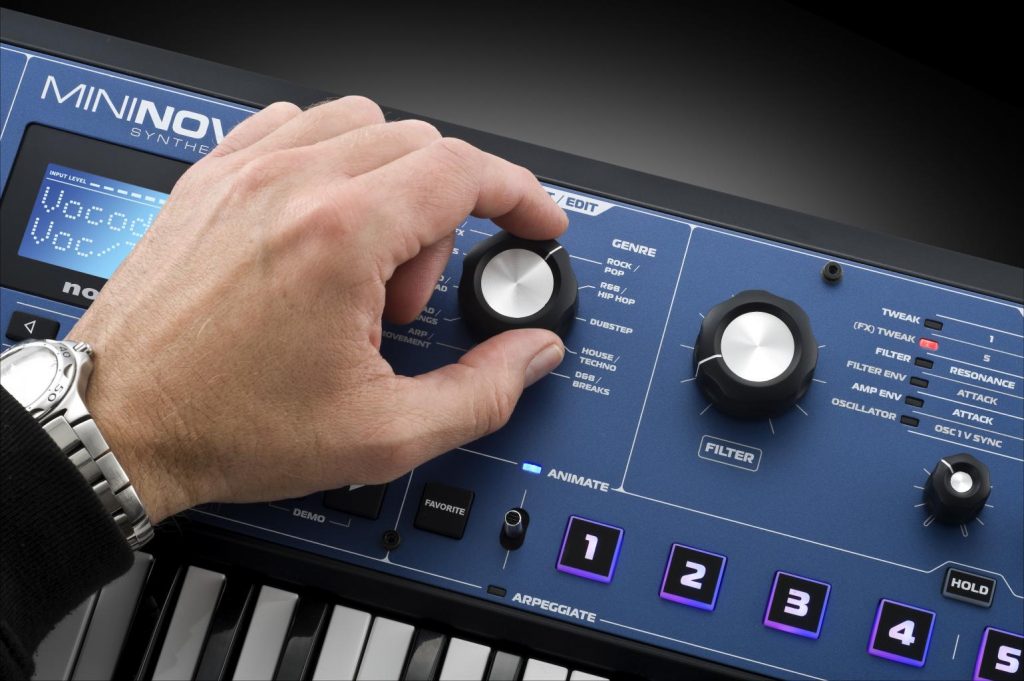
Envelope
When the user plays a particular note or key, there are certain levels to it, and this information can often be represented in a table. The first section is the Attack which happens right after the pressing of a key. The note will run-up to its peak level. Of course, once it reaches the peak, there is a Sustain level that should come after that. However, there is also an intermediate stage between these two that is known as the Decay. Often the peak level can’t be maintained and hence the decay level allows for the signal to go down to a place where the machine can comfortably maintain the signal. The last stage is the Release. This is also a period of decay from the sustain level to no sound output. Different devices will allow for varying levels of the envelope, and hence you should check how potential purchases perform in this regard.
Connectivity
You may also want to know the connection ports that each device has. Common examples include USB, MIDI, headphone output, and more. You want a machine with more connection ports since that means you can couple it with other musical devices as well as derive musical input from other sources.
Oscillators and filters
Effects
Audio effects will allow you the freedom to manipulate a signal so you can get the desired sound. In this regard, they work more or less as filters do.
Size
If mobility is what you are going for with your synthesizer, then the smaller, the better. However, mobility may come at a cost since the keys will be smaller, controls will be fewer, and the overall device will likely be less functional.
Weight
Similar to the size, you should go for the lightest device you can find as long as this design feature doesn’t get in the way of the machine’s other properties and characteristics.
Pricing
Of course, pricing is a crucial aspect of any purchase. Cheaper options range in the $300 to $500 price range and are thus more accessible. If you have more money, you can even go for products priced at $1000 and above. The latter will likely have more features as well.
FAQ
A keyboard will often playback or recreate sounds produced by other musical instruments when you press a key. On the other hand, a synthesizer is capable of creating unique sounds by manipulating electrical voltages in its circuitry.
As mentioned above, you have an oscillator that will allow the user to shape voltages into a specific steady pitch with a given frequency. This is what determines the basic waveform produced and processed by the synth.
Each musician will have their own preferences when it comes to instruments and musical devices. As such, there is no such one size fits all with regards to keyboards or synthesizers.
Our Verdict
The Korg Prologue 61-Key Analog Synthesizer is superior to other products listed in almost every way from the key quality to the programs and voices. It thus has earned the right to be anyone’s first pick at the store. Another tool is the Dave Smith Instruments OB-6 Analog Synthesizer, which is not far behind. If you have the money, this tool will work well for the professional and has all the features to make it a joy to work with.
Also, not everybody will be looking at buying a polyphonic synthesizer. In that case, the Arturia MatrixBrute Analog Monophonic Synthesizer is the tool you should be looking for. The generators, oscillators as well as the keys are a few of the reasons why this should be your first monophonic synth. Also, if you fancy any other tool from the selection above you can go ahead and buy it as well. After all, they are all fantastic options as well.



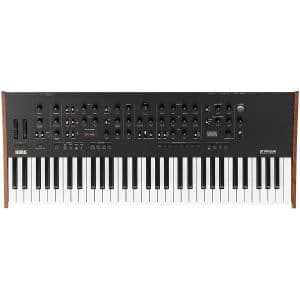
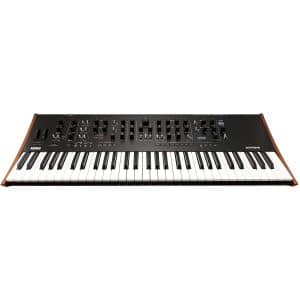
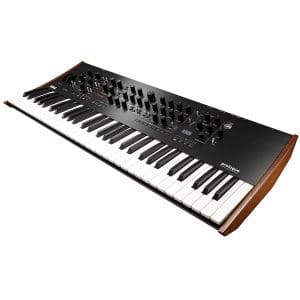
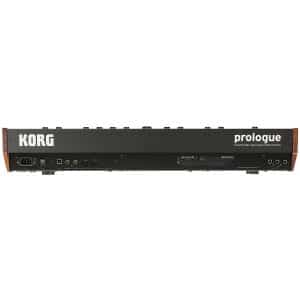
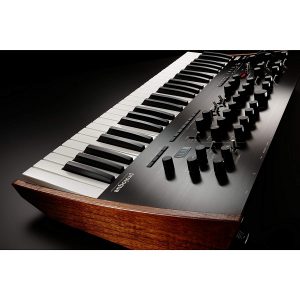
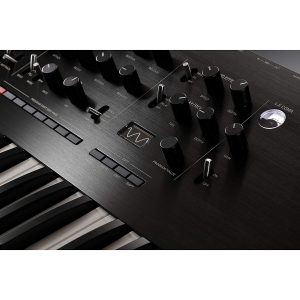
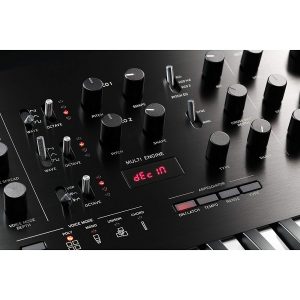
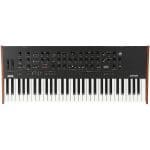
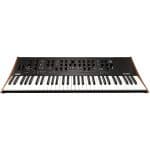
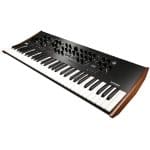
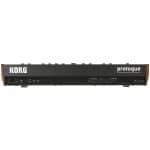
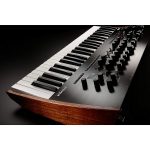
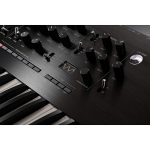
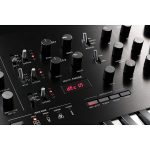
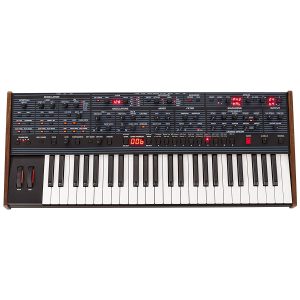
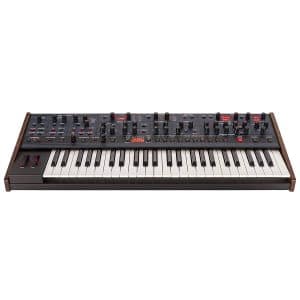
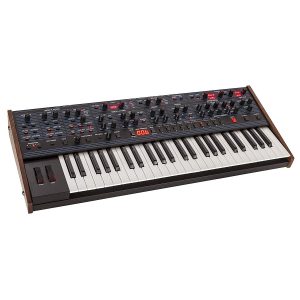
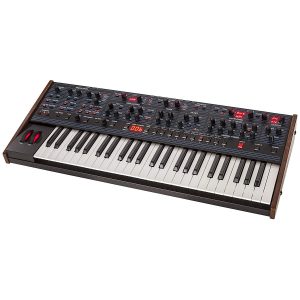
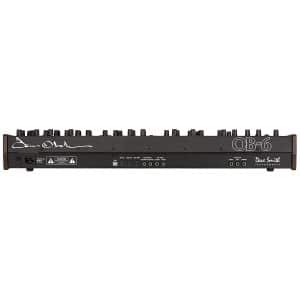
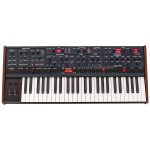
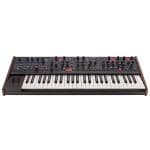
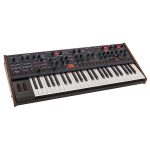
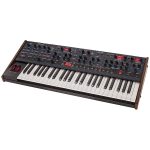
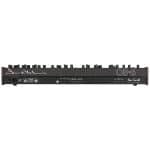
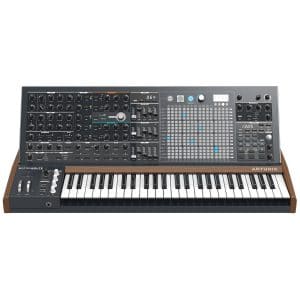
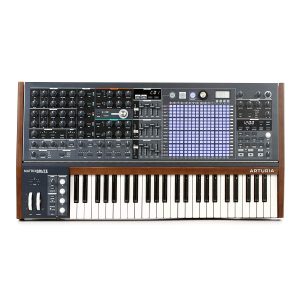
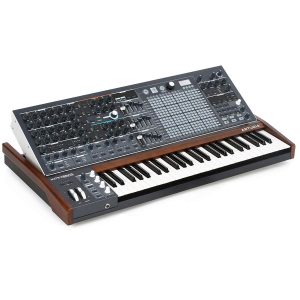
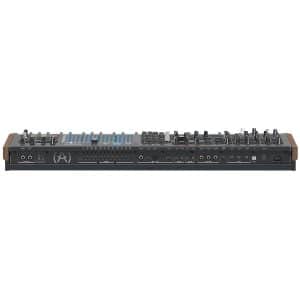
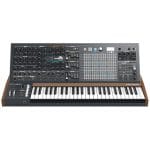
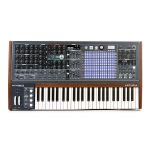
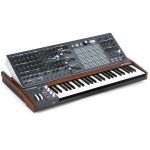
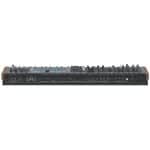
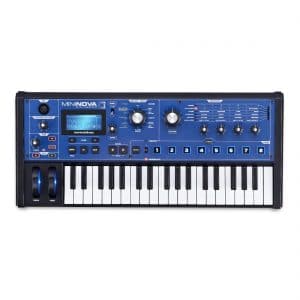
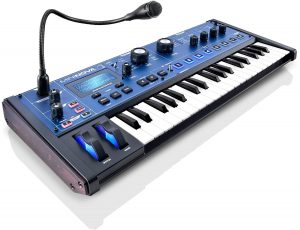
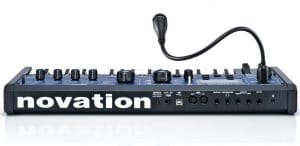
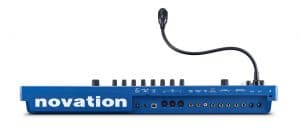
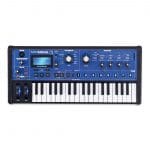
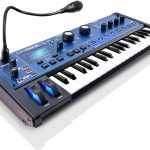
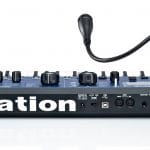
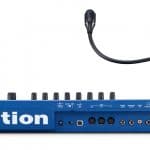
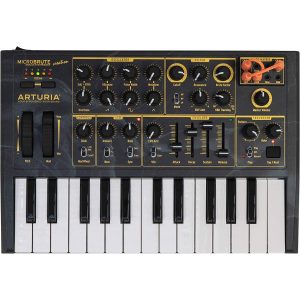
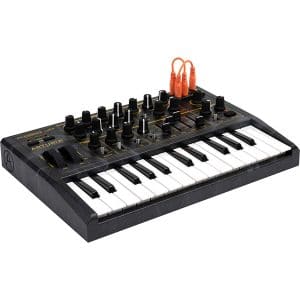
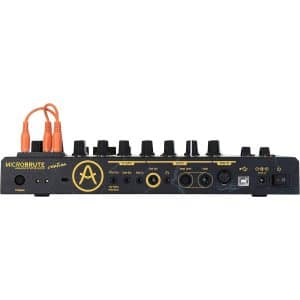
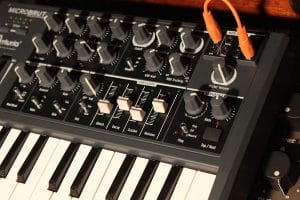
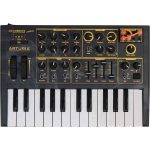
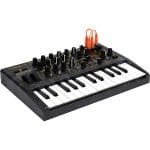
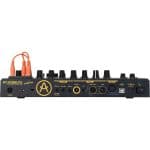
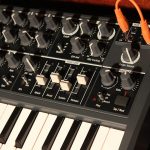
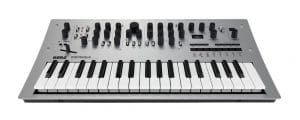
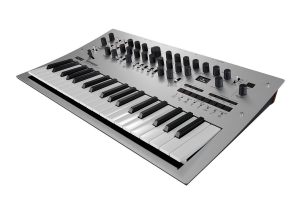
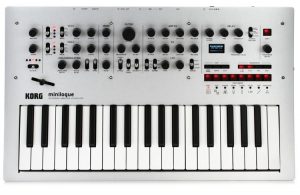
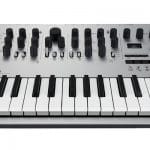
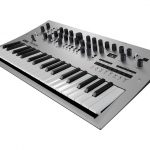
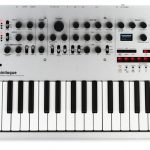
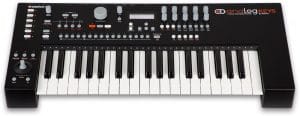

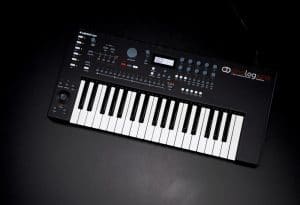
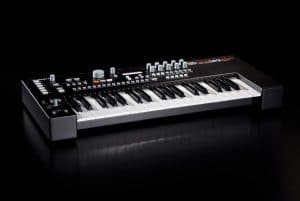
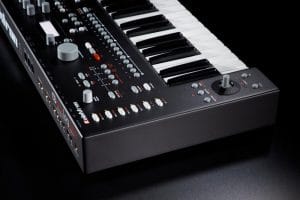
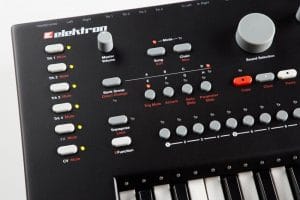
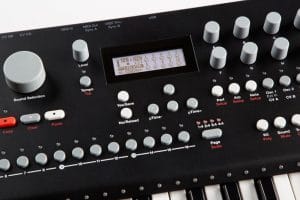
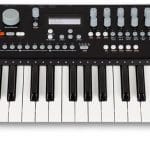
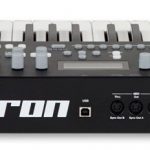
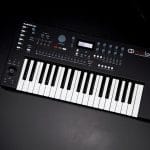
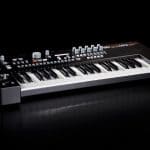
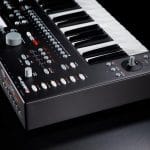

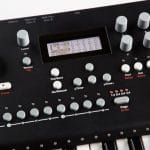

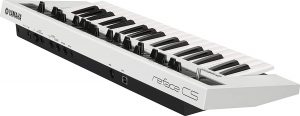

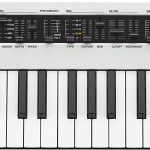
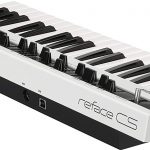
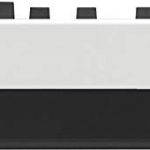
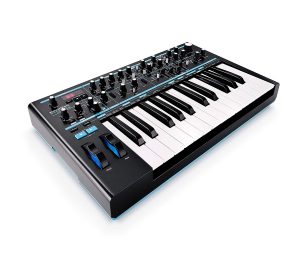
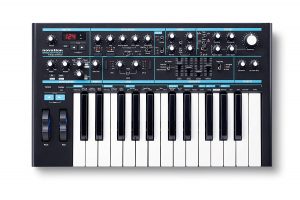
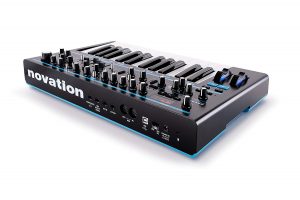
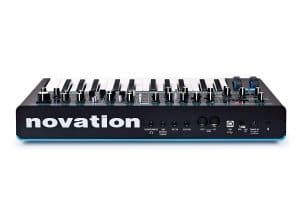
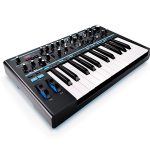
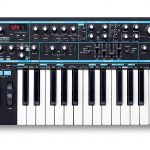
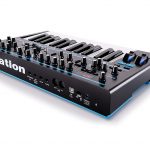
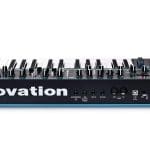





Leave a Reply